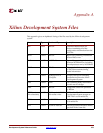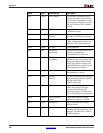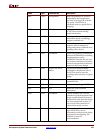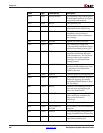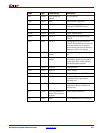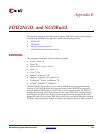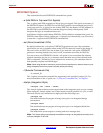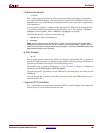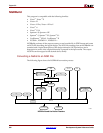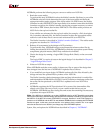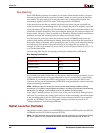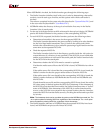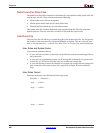
Development System Reference Guide www.xilinx.com 381
EDIF2NGD
R
EDIF2NGD Syntax
The following command reads your EDIF netlist and converts it to an NGO file:
edif2ngd
[options] edif_file ngo_file
options can be any number of the EDIF2NGD options listed in “EDIF2NGD Options”. They
do not need to be listed in any particular order. Separate multiple options with spaces.
edif_file is the EDIF 2 0 0 input file to be converted. If you enter a file name with no
extension, EDIF2NGD looks for a file with the name you specified and an .edn extension.
If the file has an extension other than .edn, you must enter the extension as part of edif_file.
Note:
For EDIF2NGD to read a Mentor Graphics EDIF file, you must have installed the Mentor
Graphics software component on your system. Similarly, to read a Cadence EDIF file, you must have
installed the Cadence software component.
ngo_file is the output file in NGO format. The output file name, its extension, and its
location are determined in the following ways:
• If you do not specify an output file name, the output file has the same name as the
input file, with an .ngo extension.
• If you specify an output file name with no extension, EDIF2NGD appends the .ngo
extension to the file name.
• If you specify a file name with an extension other than .ngo, you get an error message
and EDIF2NGD does not run.
• If you do not specify a full path name, the output file is placed in the directory from
which you ran EDIF2NGD.
If the output file exists, it is overwritten with the new file.
EDIF2NGD Input Files
EDIF2NGD uses the following files as input:
• EDIF file—This is an EDIF 2 0 0 netlist file. The file must be a Level 0 EDIF netlist, as
defined in the EDIF 2 0 0 specification. The Xilinx Development System toolset can
understand EDIF files developed using components from any of these libraries:
♦ Xilinx Unified Libraries (described in the Libraries Guide)
♦ XSI (Xilinx Synopsys Interface) Libraries
♦ Any Xilinx physical macros you create
Note:
Xilinx tools do not recognize Xilinx Unified Libraries components defined as macros; they
only recognize the primitives from this library. The third-party EDIF writer must include definitions
for all macros.
• NCF file—This Netlist Constraints File is produced by a vendor toolset and contains
constraints specified within the toolset. EDIF2NGD reads the constraints in this file
and adds the constraints to the output NGO file.
EDIF2NGD reads the constraints in the NCF file if the NCF file has the same base name
as the input EDIF file and an .ncf extension. The name of the NCF file does not have to
be entered on the EDIF2NGD command line.
EDIF2NGD Output Files
The output of EDIF2NGD is an NGO file—a binary file containing a logical description of
the design in terms of its original components and hierarchy.



